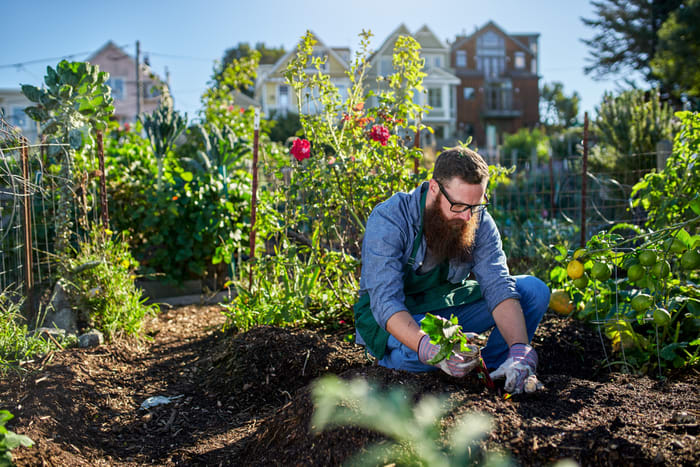Tips for Gardening: A Seasonal Breakdown

There are so many benefits to having your own garden, ranging from health perks (fresh veggies!) and curb appeal (make those neighbors jealous) to overall mental and emotional wellness (creative outlet, anyone?). And the best part is, with the right information, it’s easy to have a garden of your own. Use this season-by-season breakdown to get started. This is everything you need to know to grow...
In the spring...
No matter what you’re growing, spring is typically the best time to plant. First things first: Where will you put your garden? When selecting a location, be sure it gets plenty of sunlight. (What you plant determines the amount of sunlight that you will need, so make sure to do your research beforehand!) Once you have your location selected, it’s time to lay down the soil. But before you start digging in the dirt, make sure it’s the right type. Most plants and crops do best in nutrient-rich soil. Spend some time researching the type of soil you need, and this will help your plants or crops thrive. Once you’ve selected your soil, prepare your garden for planting. Use markers to designate what you want planted, and where (these markers will also help you remember where you put everything).
In the summer...
Your garden is now ready for planting! This is the fun part. Once you have the seeds you want to grow, plant away! After your seeds have been planted, make sure you water them regularly. Once a day is typically good, but do some research to see what your particular garden needs to flourish. And don’t forget to weed! Do a little bit every day to keep things from getting too overwhelming.
Summer is also the time of harvest—if you planted vegetables or fruits, they will likely be ready to eat once they are in full bloom. If you are growing flowers, they will probably hit their peak during this time of year. Step back and admire it as much as possible.
In the fall...
Three words: Winter is coming. The arrival of fall means that it’s time to prepare for the colder days ahead. Harvest any remaining crops, and cover the ones that aren’t quite ready yet. If there is an early frost that kills some of your plants or fruits and veggies, compost the resulting waste.
In the winter...
Winter is a time of rest—but first, you need to do a few housekeeping chores. Use this checklist below to make sure you don’t forget anything.
- Put away your tools for the winter. Store them in a garage or backyard shed for safekeeping.
- Use mulch to cover crops. This will protect them from frost and keep any animals out of your yard.
- Create an indoor windowsill herb garden to feed your green thumb during the off-season! Try planting basil, thyme, cilantro and other herbs.
- Plant cold-hardy crops. If you miss gardening outside, research plants or crops that can survive during wintry conditions.
- Start thinking about what you want to grow next season! It’s never too early to get excited about what you’ll plant in your garden.
Sources:
The Seed Shop. (N.D.). Everything You Need to Know About Gardening Through All the Seasons. www.seedsnow.com/blogs/news/44541953-everything-you-need-to-know-about- gardening-through-all-the-seasons
Carissa’s Creativity Space. (N.D.). Gardening 101: 10 Things Beginning Gardeners Need to Know. www.creativegreenliving.com/2013/04/gardening-101-beginning-gardening-tips.html
